There’s a lot more to bar soap than you think. Unfortunately, a lot of what you find on store shelves is made from chemicals that can harm your body. Body washes and shower gels tend to be even worse.
Soap Goes Way Back
The Babylonians were using a form of soap as early as 2800 B.C. They combined fats, wood ash and water for a mixture with cleansing abilities. These first soap “recipes” have been found inscribed on ancient clay containers and tablets. From what we can gather, soap was used primarily to clean textiles, such as cotton and wool. We’re not sure the Babylonians ever thought of using it on their bodies. Nevertheless, it’s safe to credit Babylon for the beginnings of soapmaking.

It Was Going Well, Until…

Soap can be found in just about every ancient civilization from Europe to the Middle East to Asia. Roman legend has it that soap got its name from a fictional mountain called Mount Sapo, where the Romans would sacrifice animals. According to the story, rain carried ash from the fires and fats from the animals down the Tiber River, where women washing clothes realized the mixture got their laundry really, really clean. There is absolutely no evidence supporting this myth. What we can take from it, though, is the ideology of soap as a pure and primitive substance.
Through the Middle Ages, soapmaking continued to gain momentum. Soap essentially helped bathing become a thing – a good thing, to say the least. Even in industrialized America, soap remained a handmade, relatively small-batch process following Colonial Era methods.
It wasn’t until World War I that commercial soap came into the picture. While synthetic ingredients helped to scale soap manufacturing so that bars could be mass-produced to treat soldiers’ wounds, the end product set the stage for soap to spiral into something it was never meant to become.
What’s Wrong with Commercial Soap?

Just like its earliest forms, soap today is still made from a combination of fats and oils, which hold vital nutrients. When the fats and oils are mixed together, a chemical reaction creates a natural compound called
glycerin, resulting in a solid bar of soap. We’re obsessed with the science behind soap, so we’re going to stop ourselves there and just let you know that glycerin is what gives soap its moisturizing, nourishing properties.
The problem with commercial soap is that the beneficial glycerin is extracted and saved for higher-margin products, like lotions, creams, and salts. Big brands tend to treat soap like a bottom-of-the-barrel product, literally removing the good stuff before selling it to you. In place of natural glycerin, you’re getting non-natural fillers – some of which are potentially harmful.
The U.S. Food and Drug Administration (FDA) doesn’t allow these types of products to be called “soap.” They’re instead defined as detergents, which brands often disguise as “body bars.” If you have ever used bar soap or a body bar and thought it felt a little harsh on your skin, it was probably a detergent.
When you think about it, there’s a one-two punch happening in all of this. The detergent dries out your skin, so you have to spend more money on lotion to get the glycerin that you could have gotten in soap in the first place. Don’t let them wrong you like that, fellas.
What’s Considered ‘Natural’ Soap?
To make matters more complicated, the FDA has not set official requirements for calling a bar of soap – or any cosmetic product, for that matter –
“natural” and/or
“organic.” What we can tell you is that there is no such thing as certified organic soap. The U.S. Department of Agriculture’s guidelines for organic products do not make it possible for soap to be labeled as such, because it will always have a percentage of sodium hydroxide from the reaction that forms
glycerin. Even if all the ingredients in the soap are organic, unfortunately, the end product just doesn’t fit the mold.
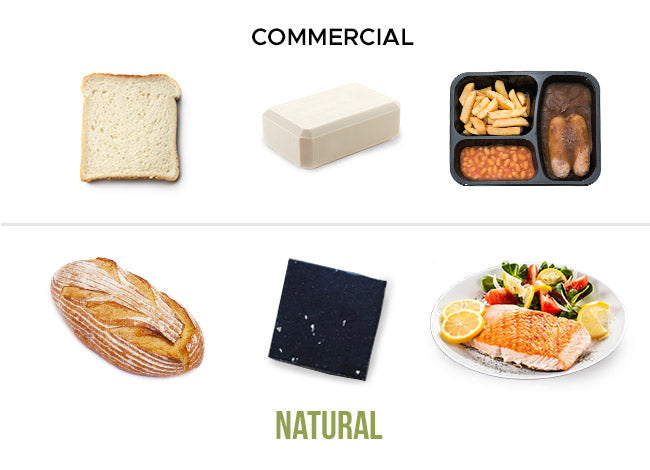
Don’t be fooled by name brands claiming to make
“natural” soap, skin and hair products. Many will toss in one or two token natural ingredients to draw attention away from the laundry list of synthetic chemicals. A simple rule of thumb for finding the most natural soap is to choose a bar that only has oils,
lye (sodium hydroxide that helps soap get its glycerin), and other ingredients that you can name and recognize. Don’t worry, we’ll give you a little more to work with shortly.

Liquid soap was patented in 1865 by William Shepphard but wasn’t mass-produced until the 1980s. Many people had begun to believe that bar soap harbored bacteria (simply not true) and that hands-free liquid soap would be more sanitary (also not true). Genesis Research Corporation developed a product called “Body Wash” toward the end of the ‘80s, describing it as “an invention which allows the user to enjoy a luxurious stand-up bubble bath by using a hands-free soap disbursement while showering.” At first, the body wash was dispensed directly into the shower. Within a year, it was being bottled with a pump-like nozzle.
While brands advertise the lathering and moisturizing qualities of body wash, even the highest-quality liquid can’t match the purity and simplicity of
natural bar soap. Read the ingredients in the most expensive body wash in stores, and you will see things you would never find in natural soap, because body wash needs petroleum, potassium hydroxide, betaines, and other agents to hold its liquid consistency.
Additionally, body wash is almost always overused in the shower. When you apply too much body wash, you waste more water washing it off. You also go through the product faster, which means you spend more money buying more of those plastic bottles that end up in landfills at best and in oceans at worst. Do you really need all that excess lather at the expense of both your wallet and the environment? Come on, bar soap has plenty of suds to scrub with.
Natural Soap vs. Body Wash vs. Shower Gel
Shower gel is pretty much the same as body wash, but with a little thinner consistency. Neither body wash nor shower gel can be labeled soap because of the detergent base. People stuck in the obscurity of the body wash vs. shower gel debate might argue that one moisturizes better than the other, and so on. We’re not really concerned with the difference between body wash and shower gel, since we know that
natural soap moisturizes, hydrates, cleanses, and more – all in one little bar that can last much longer than a bottle of liquid body gel, shower wash, or whatever you want to call it.
How Natural Soap is Made
All soap starts with a mixture of fats, oils, and a sodium hydroxide solution such as lye. Here’s how the process should go from there:

- The base soap oils such as olive and coconut are mixed with the water & lye solution, which begins to slowly thicken.
- Other natural ingredients, such as shea butter, trace essential oils, and extracts are added to give the soap softness and nourishing qualities.
- The soap can then be naturally colored with vegetable colorings or iron oxides.
- The cooled mixture is stirred and poured into a mold.
-
Dr. Squatch uses a large square mold that we later cut into smaller individual squares.
- The soap is then “cured” or hardened before being exposed to air to dry.
- The longer the curing process, the more solid the bar becomes, and the longer it lasts. We use a two-week curing process, often letting our soap cure in the box on the way to our customers’ doorsteps
The key difference between natural soapmaking and commercial soap production is that the glycerin in commercial soap is removed before the soap ever has a chance to become soap. Worse yet, harsh, boiling chemicals are added in place of the soft, cool glycerin. This is why mass-produced soap can be made in a matter of hours, while real, natural soap needs to “age.”
Not only is commercial soap undesirable for your skin, it’s also disrespectful to Babylon and the other ancient civilizations that started soap in the first place. All those storied rulers would have never rubbed something called sodium lauryl sulfate on their bodies. It’s time for all of us think more like kings and less like consumers.
Hot Process vs. Cold Process Soap
Bar soap can be made in either a hot or cold process. Commercial soap is usually made in a hot process that looks more like chemistry than craft; picture massive vats boiling at extreme temperatures. The external heat in soapmaking speeds up saponification (how glycerin is made) and makes it nearly impossible to add fresh ingredients. Hot process soap can be traditional and natural, but the fact of the matter is that name-brand manufacturers don’t treat it that way.
A cold process like the one we use at
Dr. Squatch is much more hands-on, and, in a way, artistic. Since everything has been heated before we begin making the soap, we can control the saponification process. This gives us a stronger hold on the texture and fragrance than we would have in a hot process, while also allowing us to add fresh, natural ingredients.
Referring back to our hot process visual of large, boiling tanks, we’ll add that the cold process looks more like a smooth, opaque batter. The biggest difference between hot process and cold process soap, though, is curing. Hot process soap does not cure at all – it basically has no soul! Cold process soap, on the other hand, cures for weeks to reach its finest form.
The Drastic Dichotomy of Fragrance

How does soap smell so good? This is another area where natural and commercial soap go their own separate ways.
Natural soap gets its scent from essential oils, which are believed to have many benefits ranging from healing skin conditions and reducing wrinkles to balancing hormones, soothing muscles, and even alleviating pain.
Meanwhile, commercial soaps have synthetic scents that are chemically unidentifiable to consumers. Cosmetics makers are not required by the FDA to make the public aware of the potentially thousands of non-natural add-ins they use to create certain fragrances. There is no transparency, and no sign that there ever will be. What we do know is that many manufactured scents are a mixture of carcinogens, neurotoxins, allergens, and other dangerous add-ins. Whenever you notice “fragrance” listed as an ingredient, it’s a concoction of chemicals. The only questions are how many of them are there and how harmful are they?
Benefits of Natural Soap
- Moisturizing Glycerin
- Nourishing Oils and Extracts
- No Harsh Chemicals
- No Preservatives
- Longer Lasting
- Crisp, Refreshing Scents
- Environmentally Conscious
Put Down

If you see any of these ingredients in a bar of soap, stray away, friend.
- Sodium Lauryl Sulfate (SLS) – Dries and irritates the skin. Also linked to cancer, liver damage, and depression.
- Dioxane – A contaminant and suspected carcinogen produced from sodium laureth sulfate (SLES) known to irritate the eyes, respiratory tract, and skin.
- Triclosan – Classified as a pesticide by the United States Environmental Protection Agency (EPA). Linked to bacterial resistance, weakening of the immune system, thyroid hormone imbalance, allergies, and reproductive toxicity.
- Parabens – Potentially disruptive to natural hormones. Believed to mimic estrogen and contribute to decreased sperm levels in men.
- Ureas – Capable of releasing the dangerous chemical formaldehyde, a known carcinogen and environmental toxin.
- Polyethylene Glycol (PEG) – Directly linked to cancer and organ toxicity.
Listen, we’re not trying to scare you into using natural soap. We just want you to be aware of the long-term effects that the synthetic agents in commercial soap could conceivably cause based on science. We never really know how or why health issues arise, which is why we should take every opportunity to avoid potentially harmful chemicals in personal care products.
Pick Up
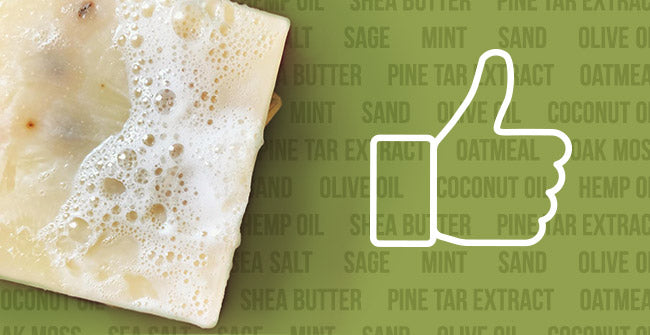

When you see ingredients like these, with none of the additives above, you know you’re in business.
- Olive Oil – Antioxidant, anti-inflammatory, and moisturizing properties in one.
- Coconut Oil – Used in the treatment of various skin conditions, including dermatitis, eczema, and psoriasis.
- Hemp Oil – Helps the skin’s ability to retain moisture.
- Essential Oils – Fragrant, cleansing, and hydrating oils like lavender, cypress, and sandalwood.
- Shea Butter – Smoothing and moisturizing, with anti-inflammatory benefits.
- Pine Tar Extract – Often used to treat skin irritation and/or bug bites. The real MVP in Dr. Squatch’s woodsy, refreshing Pine Tar soap.
- Oatmeal – Gently cleansing and pH balancing. An unsung hero in our Pine Tar soap.
- Oak Moss – An earthy, rustic base note than can be found in our Gold Moss Scrub.
- Sea Salt – A subtle, affordable means of using salt as a scrub for its many skin benefits.
- Sage – Known for increasing pulmonary circulation. Discover sage soap here.
- Mint – Believed to reduce acne and breakouts. We use mint leaves in our Spearmint Basil Scrub.
- Sand – An underrated natural exfoliant that is as refreshing as a day at the beach.
Men’s Bar Soap Best Practices
- Read the back of the packaging before buying.
- Don’t be fooled by one or two buzzworthy ingredients.
- Choose natural soap over mainstream body bars and body wash.
- Natural soap can also be used as a face wash and beard wash.
- We don’t recommend using soap to wash your hair. (Guys, we’ve got natural hair care products, too.)
- Be mindful of exfoliation. If you have sensitive skin, consider sticking with a smooth and soft bar. If you want to actively remove dead, dry skin, go for a soap that also acts as a scrub.
- Store your soap somewhere it can dry out between uses. (This nifty soap saver can help.)
Find the Right Bar of Soap in 5 Minutes or Less

At this point, it’s safe to say you know more about bar soap than the next guy. The decision is easy, and the next steps are clear. Take the Dr. Squatch Soap Quiz to find the natural soap that’s right for you. Or, shop our soaps and roam free. Once you find some suds you like, try our soap subscription so you’re always soaped and stocked up.













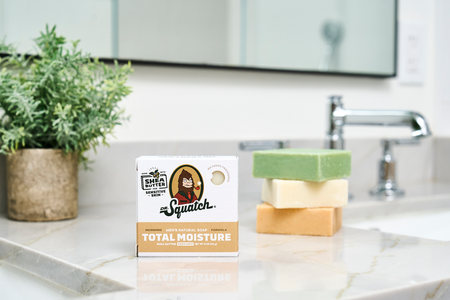
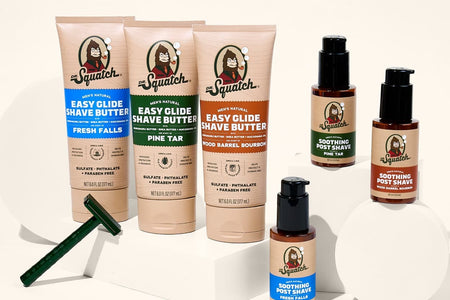
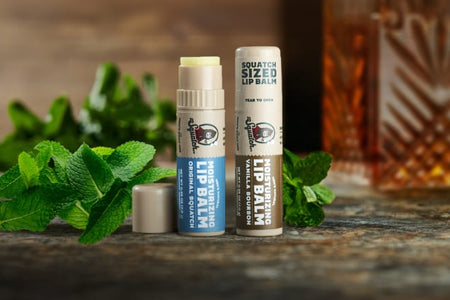

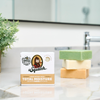
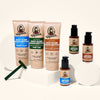
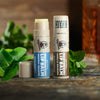


Leave a Reply
Your email address will not be published. Required fields are marked *